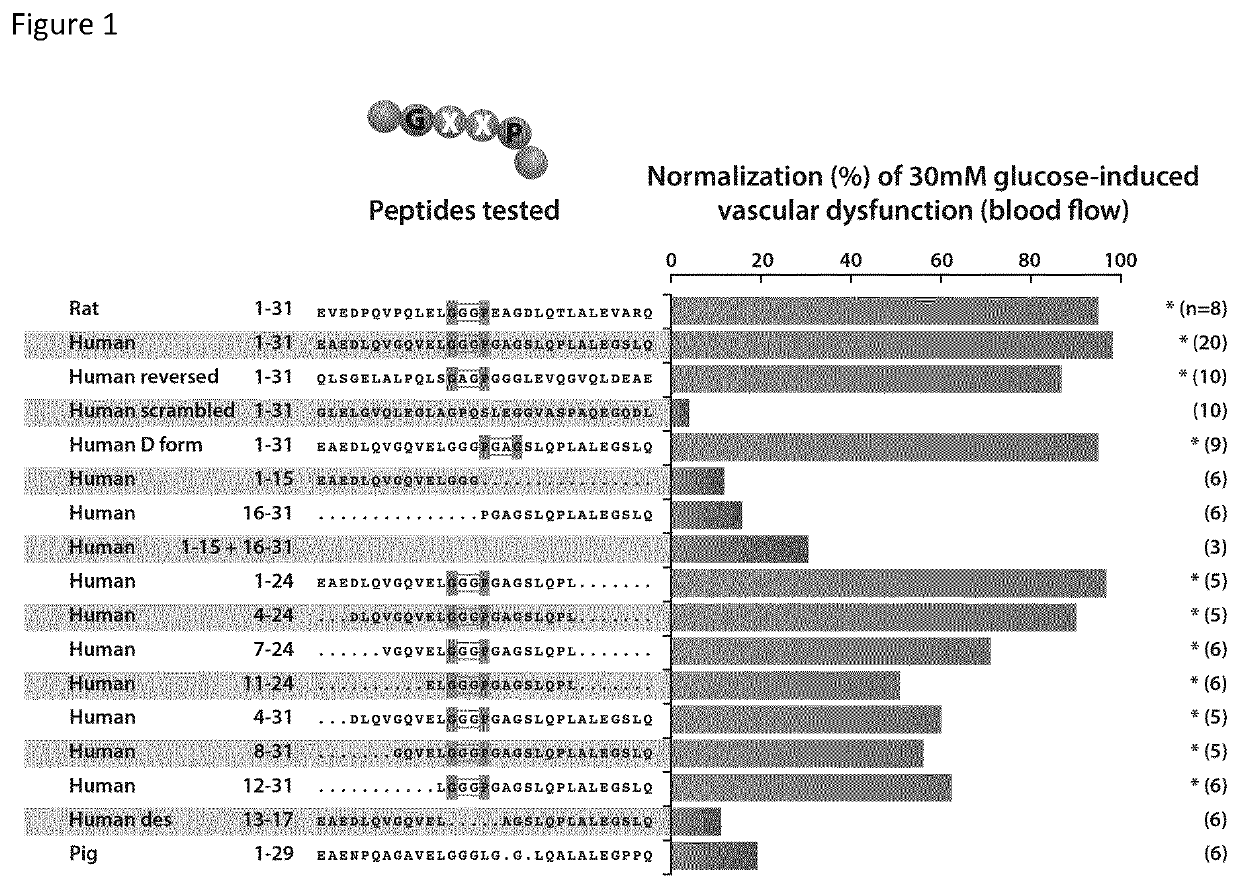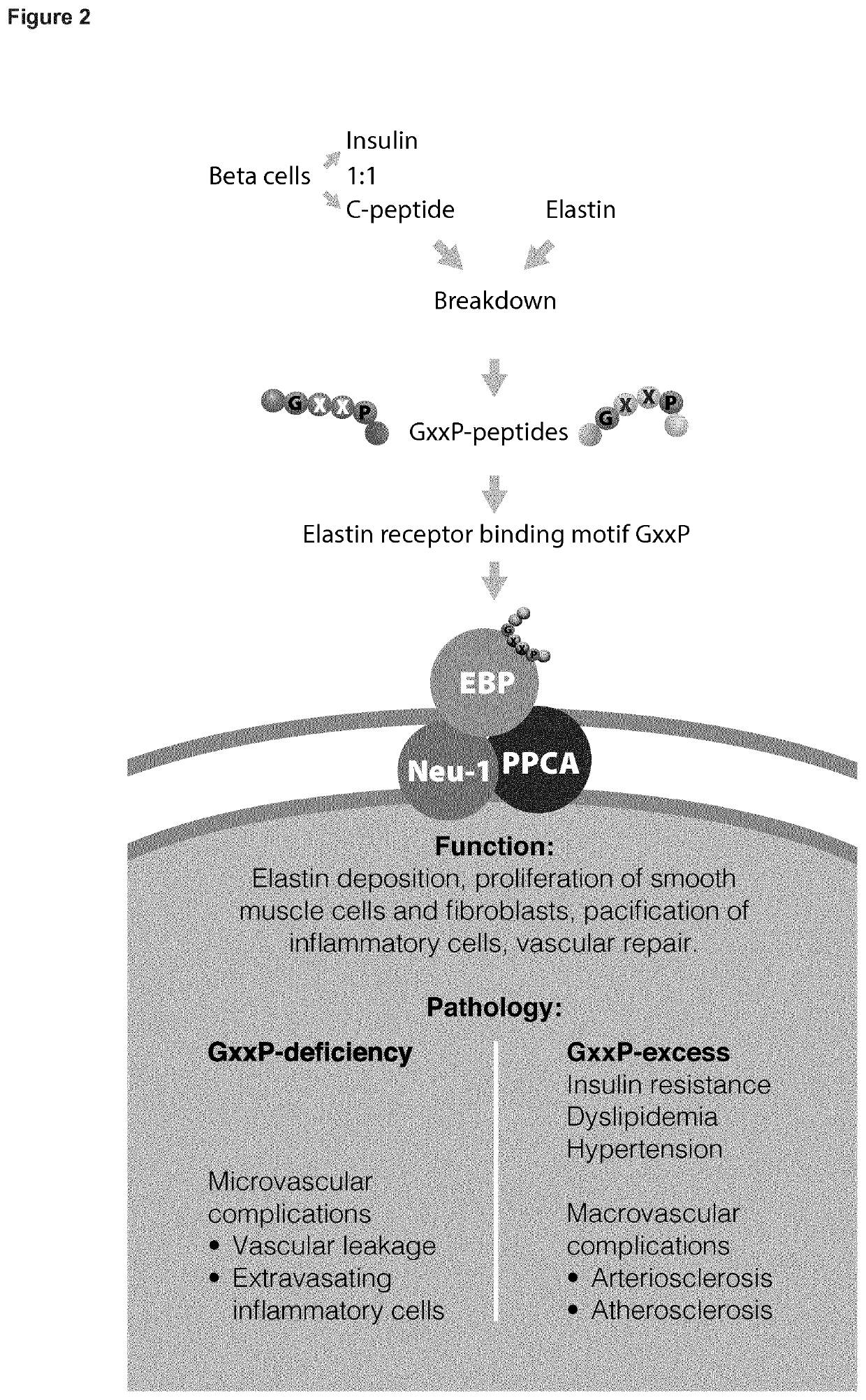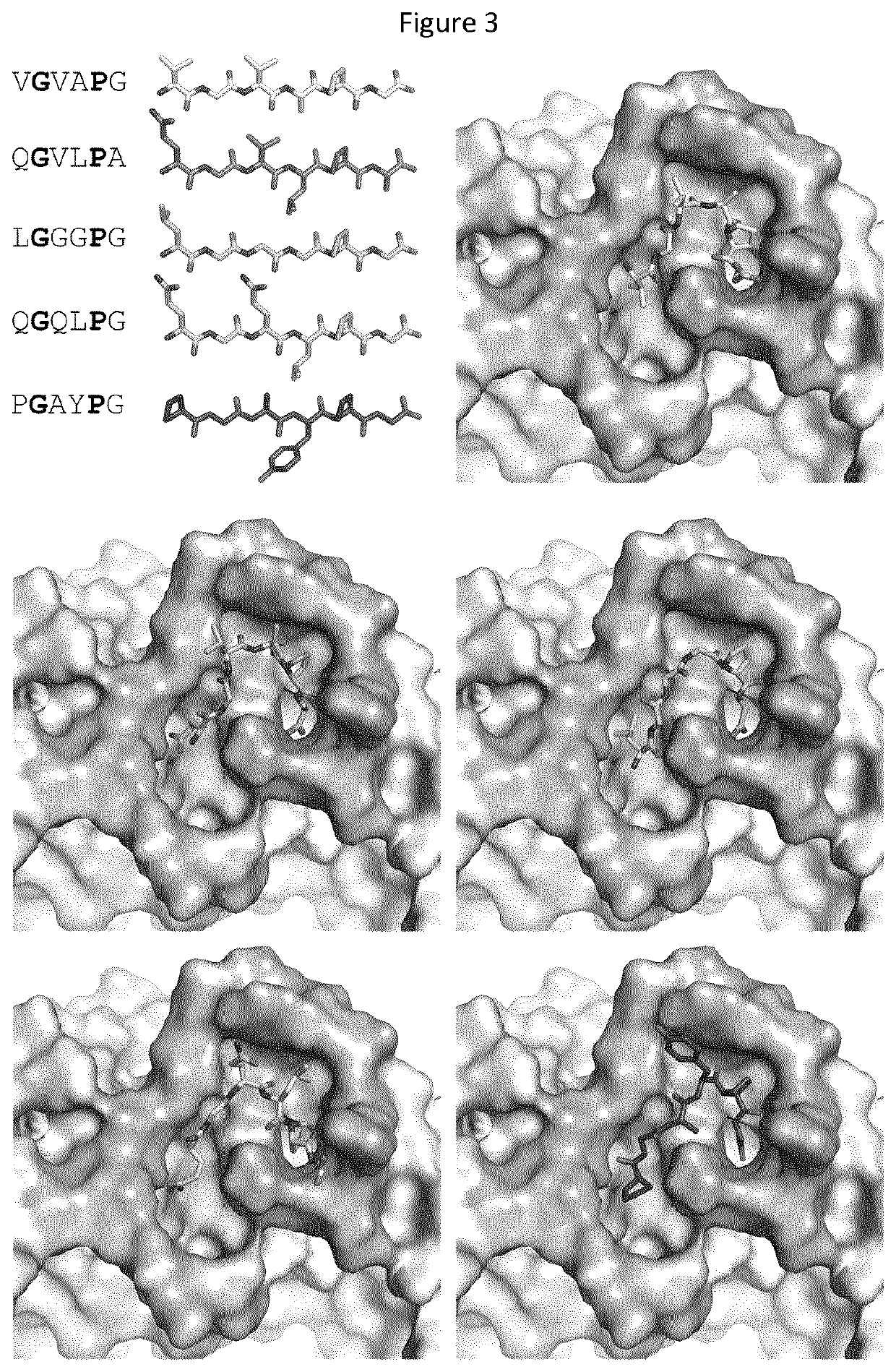Peptide modulators of the interaction between human c-peptide and human elastin receptor for therapeutic use
a technology of c-peptide and human elastin receptor, which is applied in the field of human medicine, can solve the problems of increasing the risk of dying from obesity, too early manifestation, and increasing the risk of obesity, and achieves the effects of hampered endocytosis, increased presentation of interleukin-i receptor, and reduced toxicity
- Summary
- Abstract
- Description
- Claims
- Application Information
AI Technical Summary
Benefits of technology
Problems solved by technology
Method used
Image
Examples
Embodiment Construction
[0120]Human C-peptide is found a ligand of the human elastin receptor.[0121]Elastin receptor shall mean a chemical group or molecule on the cell surface or in the cell interior that has an affinity for a peptide having an amino acid motif GxxP, wherein G represents the one-letter code for the amino acid glycine, P for the amino acid proline and x for any amino acid, the amino acid following P preferably allowing for a type VIII-beta turn, a condition that is met when P is C-terminally followed by a G, the elastin receptor typically represented in humans by the elastin binding protein known in the publicly accessible database Uniprot as GLB1—isoform 2 under identifier: PI6278-2.[0122]C-peptide shall mean a peptide typically produced by beta-cells in the pancreas together with insulin, the C-peptide represented in humans by the peptide known in the publicly accessible database Uniprot as INS-isoform —1 under identifier: P01308-1, position 57-87.
[0123]Human C-peptide, connecting immatu...
PUM
| Property | Measurement | Unit |
|---|---|---|
| resistance | aaaaa | aaaaa |
| blood pressure | aaaaa | aaaaa |
| hydrophobic | aaaaa | aaaaa |
Abstract
Description
Claims
Application Information
 Login to View More
Login to View More - R&D
- Intellectual Property
- Life Sciences
- Materials
- Tech Scout
- Unparalleled Data Quality
- Higher Quality Content
- 60% Fewer Hallucinations
Browse by: Latest US Patents, China's latest patents, Technical Efficacy Thesaurus, Application Domain, Technology Topic, Popular Technical Reports.
© 2025 PatSnap. All rights reserved.Legal|Privacy policy|Modern Slavery Act Transparency Statement|Sitemap|About US| Contact US: help@patsnap.com



